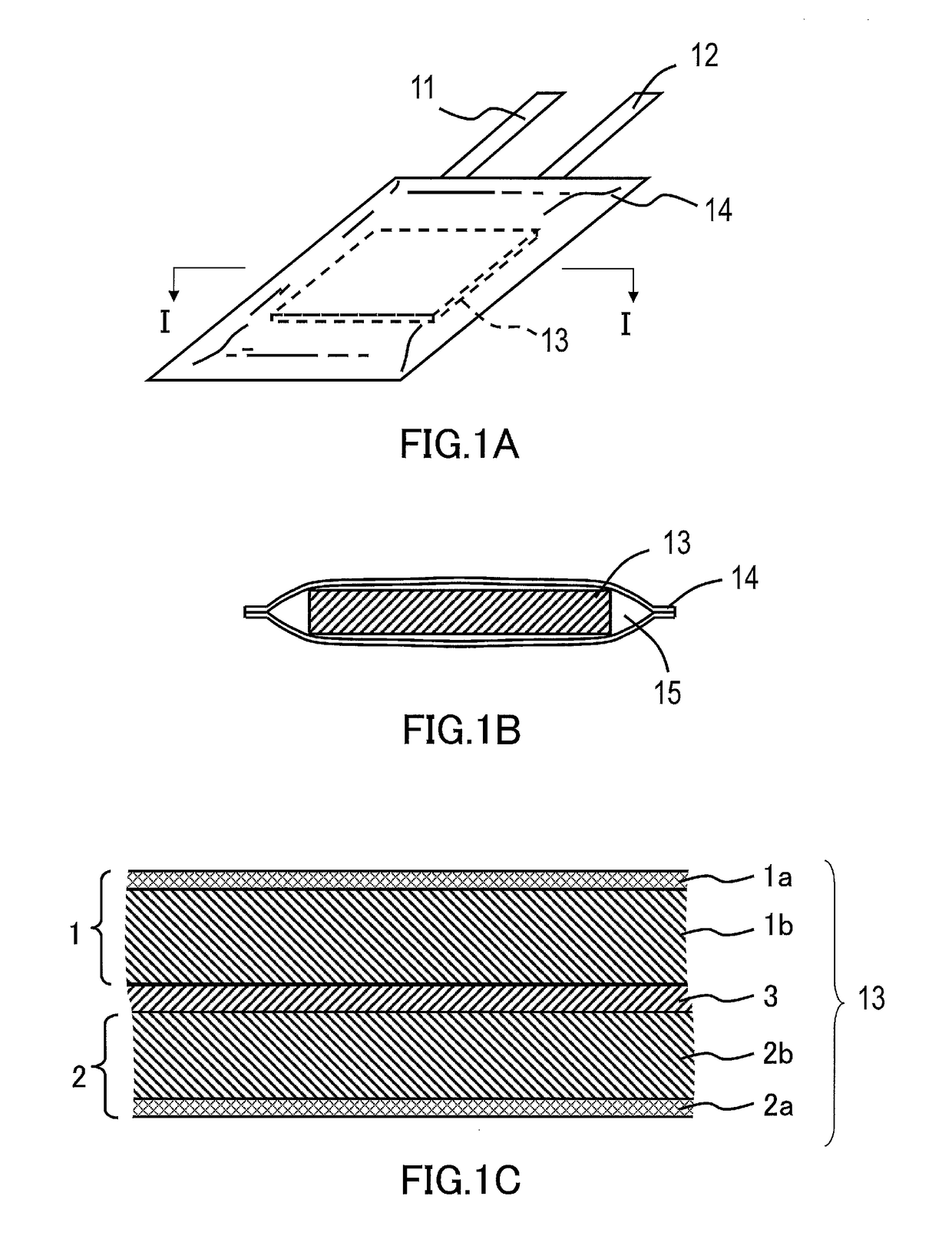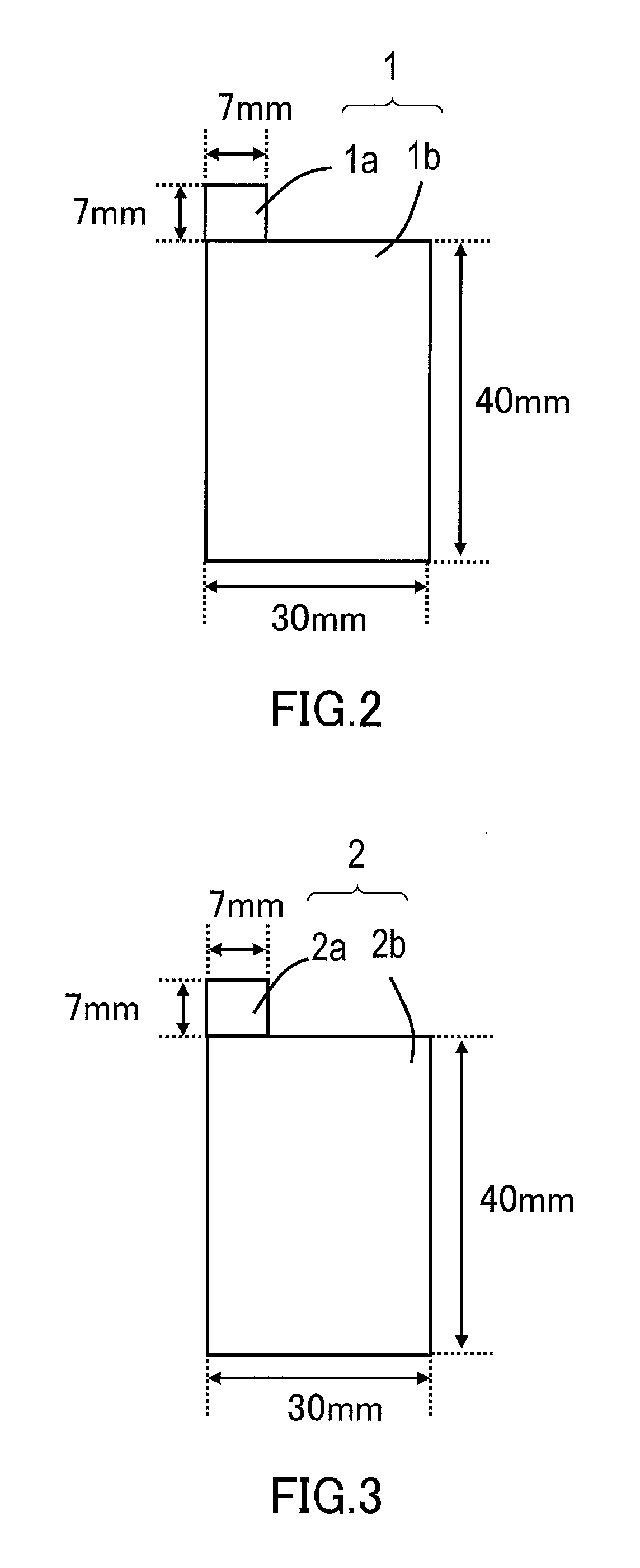Nonaqueous electrolyte secondary battery and method for manufacturing the same
a technology of nonaqueous electrolyte and secondary battery, which is applied in the direction of cell components, final product manufacturing, sustainable manufacturing/processing, etc., can solve the problems of large crystal structure change, higher cycle degradation rate of single electrode, and negative electrode limitation, so as to improve the cycle characteristics of the battery and reduce the amount of additives. , the effect of large reaction capacity
- Summary
- Abstract
- Description
- Claims
- Application Information
AI Technical Summary
Benefits of technology
Problems solved by technology
Method used
Image
Examples
example 1
[0083]
[0084]First, LiNi0.80Co0.15Al0.05O2 was prepared as a positive electrode active material. The method of preparing LiNi0.80Co0.15Al0.05O2 is as follows.
[0085]Cobalt sulfate of a predetermined ratio was added to a nickel sulfate aqueous solution with a concentration of 1 mol / l and thereby a metal salt aqueous solution was prepared. While this metal salt aqueous solution was maintained at 50° C. and stirred at low speed, an alkaline solution containing 30 wt % of sodium hydroxide was dropped thereinto so that a pH of 12 was obtained, and thereby hydroxide was precipitated. This precipitate was filtrated and washed with water, which was then heated in the air to 80° C. to be dried.
[0086]Next, the hydroxide thus obtained was stirred in water inside a reaction vessel at 30° C. and then a predetermined amount of NaAlO2 was added into the reaction vessel, which was then stirred sufficiently. After that, the solution inside the reaction vessel was neutralized using sulfuric acid until ...
example 2
[0105]A battery was produced by the same method as that used in Example 1 except that the amount of graphite fluoride contained in the negative electrode mixture was different. The negative electrode mixture was weighed in such a manner that a weight ratio of Li4Ti5O12:VGCF:PVdF:(CF)n=100:5:4:0.82 was obtained. Then an appropriate amount of N-methyl-2-pyrrolidone (NMP) was added thereto, which was stirred and mixed together. Thus a negative electrode mixture in a slurry state was obtained.
example 3
[0107]A battery was produced by the same method as that used in Example 1 except that the negative electrode mixture was different. Li4Ti5O12 produced by the same method as that used in Example 1, acetylene black (AB) as a conductive agent, polyvinylidene fluoride (PVdF) as a binding agent, and graphite fluoride (manufactured by Daikin Industries, Ltd., (CF)n) were weighed in such a manner as to have a weight ratio of Li4Ti5O12:AB:PVdF:(CF)n=100:5:4:2.9. Then an appropriate amount of N-methyl-2-pyrrolidone (NMP) was added thereto, which was stirred and mixed together. Thus a negative electrode mixture in a slurry state was obtained.
PUM
| Property | Measurement | Unit |
|---|---|---|
| particle diameter | aaaaa | aaaaa |
| thickness | aaaaa | aaaaa |
| thickness | aaaaa | aaaaa |
Abstract
Description
Claims
Application Information
 Login to View More
Login to View More - R&D
- Intellectual Property
- Life Sciences
- Materials
- Tech Scout
- Unparalleled Data Quality
- Higher Quality Content
- 60% Fewer Hallucinations
Browse by: Latest US Patents, China's latest patents, Technical Efficacy Thesaurus, Application Domain, Technology Topic, Popular Technical Reports.
© 2025 PatSnap. All rights reserved.Legal|Privacy policy|Modern Slavery Act Transparency Statement|Sitemap|About US| Contact US: help@patsnap.com



